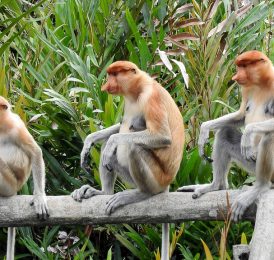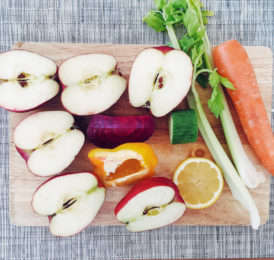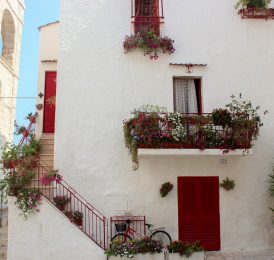For when we are past covid-19 and able to travel again, I thought I’d write about the best Seoul food markets I explored during my trip. Hopefully this post can help with any future South Korea travel planning!
Seoul has some of the best food markets I’ve ever been to in the 40+ countries I’ve visited so far. There really are so many to choose from. However if I had to pick the best, it would be Namdaemun, Dongdaemun, Gwangjang and Myeongdong Market.
Namdaemun Market
South Korean’s oldest and largest market is in Namdaemun – a traditional, bustling market next to Namdaemun Gate. It’s best to come here during the day, where you can witness the chaotic maze of over 10,000 stalls selling food, clothing, electronics, home goods, you name it…

I guarantee that you’ll get lost at least several times here, unless you have spectacular navigation skills. I certainly don’t. The huge variety of stalls reminded me a little of my favourite market in Bangkok, called Chatuchak.
We unexpectedly discovered a hidden restaurant-alley within a quieter area of the market. (Later I realised this is a well-known ‘block’ of Namdaemun Market called Kalguksu, or “Noodle Soup Alley”). As we entered we were met by a cacophony of noise from all directions. Everyone was bent over their food with unwavering concentration – a testament to how good the food must have been. The stall owners were trying to lure us in with promises of large, steaming bowls of noodles. I loved it.


First course for breakfast was mung bean pork pancakes (bindae-tteok). A hearty, excellent combination of mung beans, pork, kimchi, vegetables and eggs. What’s not to love? It was reassuring to soon realise there was an infinite number of Korean pancake stalls in Seoul, should a craving ever happen to kick in.


This was followed by DIY seafood sticks that you’re encouraged to smother in chilli paste or soy sauce. Perhaps not my favourite, but fun nonetheless!


I recommend trying one of the many types of fresh doughnuts they sell at Namdaemun Market. Such as the regular twisted doughnut (kkwabaegi) or a doughnut filled with sweet red beans (chapssal).

We eventually had to tear ourselves away from all the ridiculous quantities of food…

…and move on to the next food stop – Dongdaemun Food Market. It’s nestled within a gigantic shopping district of traditional markets and modern shopping malls. To get there, we took a short metro ride and got off at Dongdaemun History & Culture Park Station (check out this metro map).
Tip: Take one of the area guide booklets that are offered to you here. It will really help you navigate your way around Dongdaemun district, as you can easily get lost. This time not in a good way. Roughly to the East you’ll find cheaper clothing stalls, and to the West are many of the indoor shopping malls.
Dongdaemun Food Market
We followed our noses while meandering through a maze of streets, leading us to an amazing narrow street dense with food stalls. It was the famous Dongdaemun food alley, called Mukja Golmok.
Fried fish was clearly the thing to eat here.


We stopped for lunch at a tiny hole-in-the-wall cafe, which was one of my favourite places to eat during the whole trip. We got to pick our preferred type of fish from the huge platter laid out in front of us. All enjoyed alongside fluffy rice with small bowls of kimchee, spinach and bean sprouts in chilli.


The alley felt like a little oasis of calm after walking from the main shopping area. I’m surprised we were the only tourists there, after reading how popular the market is. Our next food stop was literally just down the road – Gwangjang market.
Gwangjang Market
It was brilliant when we eventually walked in to the century-old Gwangjang market in Jongno-gu. The atmosphere was very different from the other markets we had just been to.

It’s a thriving food market, absolutely packed with stalls selling traditional Korean street food, all contained under one roof. Many of the stalls are family-owned, with dishes going back for generations. I think because it was smaller than Namdaemun Market, as well as being indoors, the atmosphere felt even more energetic. It felt very authentic, with fewer tourists compared to Myeongdong or Namdaemun market.
Eating Live Octopus at Gwangjang Market
Before I go further – I didn’t eat live octopus myself. But I sat with a slightly terrified solo traveller for moral support as she tried it for the first time.
Now if you didn’t already know, a popular South Korean delicacy is eating live octopus (sannakji). This means eating a baby octopus (you can see them on display in little tanks) that has been cut up with scissors right in front of you and placed raw on a plate. The tentacles are still full-on wriggling, which you’re meant to pick up with chopsticks and dip in sesame oil before eating.
I’m normally all up for trying the weird and wonderful delicacies while traveling, but something about eating an intelligent animal that has just been chopped up, and is still moving, makes me seriously wince. AND especially after hearing horror stories of the tentacles getting stuck in people’s throats, causing people to tragically choke to death. No thank you. It was one of the most bizarre and memorable things I’ve witnessed though during my travels!


Talking of bizarre foods, I had to double take when I found a seafood stall selling what looked very much like the BARNACLES I used to tirelessly scrape off the seismic streamers when I worked offshore. The slimy streamer suckers, whose smell still makes me shudder. The crew used to tease me saying that people would pay a lot of money to eat these barnacles in some countries, to which I’d laugh and roll my eyes. Admittedly, I don’t think these are the exact same species that are every seismic crew’s worst nightmare, however they did look scarily similar 😮.
It’s safe to say one of the dishes you can eat at Gwangjang market are these ginormous fried mung bean pancakes (bindaetteok). They were everywhere!


Myeongdong Food Market
The more modern Myeongdong ‘street food alley’ had a completely different vibe. Even though it is just as much of an international shopping haven as it is food destination, the street food here is something else.
If you’re doing a full-on food market hopping day, I’d recommend coming to this market at night to experience it in full action.
See my last Myeongdong Food Market post for all the details, including the best fried chicken I’ve ever had 😋.

That completes my round-up of the best Seoul food markets. Do you have any you’d add to the list? xx
Tips:
- Bring small notes of cash with you to Seoul’s food markets.
- Most dishes aren’t more than 10,000 Korean won, ie. cheap!
- We found most markets easy to get to using Google Maps (definitely download offline maps on your phone before you get there).
- Other than Myeongdong, I’d recommend going to most of these traditional food markets during the day.
- It’s possible to visit all of these markets in one day, but start hungry!









Wow, it all looks so delicious!!
Makes it hard choosing what to eat! 😉